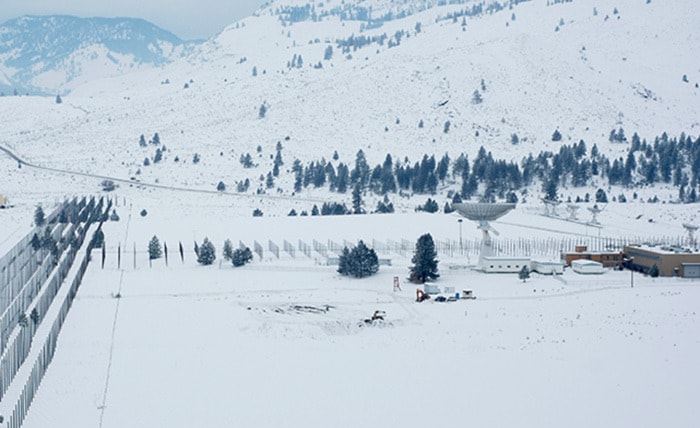Work began this week on a trial version of a cutting-edge radio telescope near Penticton that will look back billions of years into the history of the universe to give scientists a better understanding of its future.
The $11-million Canadian Hydrogen Intensity-Mapping Experiment should help explain why and how the universe is expanding, according to Dr. Mark Halpern, an astrophysicist at UBC, one of three schools participating in the project at the Dominion Radio Astrophysical Observatory near White Lake.
“Something happened to make our universe so big and so old, and something’s happening now to make (its expansion) accelerate,” Halpern said.
“It’s the basic working of what makes the universe be the way it is that we’re trying to understand.”
The telescope will analyze electromagnetic radiation to map the distribution of hydrogen - one of the earliest, most abundant elements - in different parts of the universe. Radiation coming from the most distant galaxies will allow researchers to peer back billions of years into the past, and they can then deduce how the universe expanded.
Halpern said dark energy is believed to be a key factor that’s driven expansion, although little is known about.
“Dark to astronomers just means it’s an object that doesn’t give off light, so I can’t see it,” Halpern explained. “It’s an energy density that’s causing the universe to expand. It sounds cool, but it just means we don’t know what it is.”
The full telescope will feature five half-pipes, each about 100 metres long and 20 metres wide, made of wire mesh that will collect the electromagnetic radiation in the form of radio waves. The data will then be analyzed at partner labs at UBC, McGill University and the University of Toronto.
Work is only underway now, however, on a smaller test telescope that will be about a 10th of the size of the full array. It should go into operation in April, and if it works as planned, the full-scale model will go up in late 2014, Halpern said.
He added that the White Lake site was selected because the valley in which it’s located is “radio-quiet,” and the observatory is already staffed with experts in the field of radio astronomy.
Penticton firm Greyback Construction has been hired to oversee the build, and project manager Mike Jereb said it’s unlike anything he’s ever done, although “everybody is pretty excited about it.”
Greyback is looking after the concrete work on which the equipment will rest, and will then oversee the precise installation of the telescope components by another company.
“In typical buildings it’s OK if you’re off by a half an inch or a couple millimetres,” Jereb said. “But this one we’ve got to make sure we survey it properly and it’s in exactly the right spot…. And not only that, but this entire structure has to align due north and due south perfectly.”
Jereb added that the area under the telescope is archaeologically sensitive due to the possible presence of native artifacts, so rather than clearing and levelling the entire site, workers will disturb only as much ground is necessary to put in the concrete foundations. First Nations monitors will also be on site to observe the work.
Up to $4.6 million in grant money is available for the project from the Canada Foundation for Innovation.
Sean Dougherty, who works for National Research Council of Canada as the director of its Dominion Radio Astrophysical Observatory, said his staff is excited about the new addition.
“The observatory is… providing a facility for the university community to come in and do a world-leading experiment and world-leading science. That’s really what we’re all about,” Dougherty said.
He added that if the telescope works as intended, “it’s going to be game-changing.”

